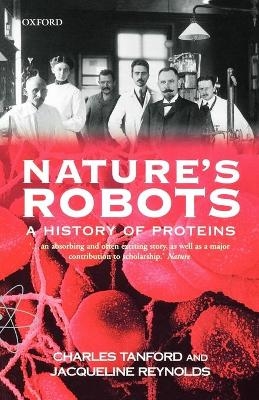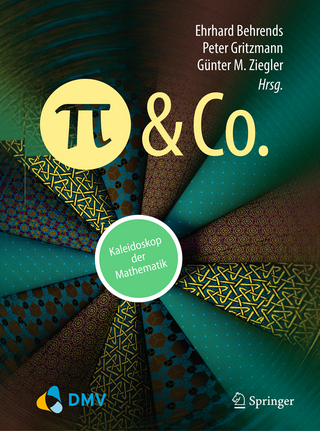
Nature's Robots
Oxford University Press (Verlag)
978-0-19-860694-9 (ISBN)
Proteins are amazingly versatile molecules. They make the chemical reactions happen that form the basis for life, they transmit signals in the body, they identify and kill foreign invaders, they form the engines that make us move, and they record visual images. All of this is now common knowledge, but it was not so a hundred years ago.
Nature's Robots is an authoritative history of protein science, from the origins of protein research in the nineteenth century, when the chemical constitution of 'protein' was first studied and heatedly debated and when there was as yet no glimmer of the functional potential of substances in the 'protein' category, to the determination of the first structures of individual proteins at atomic resolution - when positions of individual atoms were first specified exactly and bonding between neighbouring atoms precisely defined.
Tanford and Reynolds, who themselves made major contributions to the golden age of protein science, have written a remarkably vivid account of this history. It is a fascinating story, involving heroes from the past, working mostly alone or in small groups, usually with little support from formal research groups. It is also a story that embraces a number of historically important scientific controversies. Written in clear and accessible prose, Nature's Robots will appeal to general readers with an interest in popular science, in addition to professional scientists and historians of science.
Both authors are Emeritus Professors at Duke University, Durham, NC, USA and both are former Guggenheim Fellows. Tanford is a member of the National Academy of Sciences (USA). They live in Easingwold, UK.
CHEMISTRY ; 1. The naming ; 2. Crystallinity, haemaglobin ; 3. The peptide bond ; 4. Proteins are true macromolecules ; 5. Bristling with charges ; 6. Fibrous proteins ; 7. Analytical imperative ; 8. Amino acid sequence ; 9. Subunits and domains ; DETAILED STRUCTURE ; 10. Early approaches to protein folding ; 11. Hydrogen bonds and the alpha-helix ; 12. Irving Langmuir and the hydrophobic factor ; 13. Three-dimensional structure ; PHYSIOLOGICAL FUNCTION ; 14. An ancient and many-sided science ; 15. Are enzymes proteins? ; 16. Antibodies ; 17. Colour vision ; 18. Muscle contraction ; 19. Cell membranes ; HOW ARE PROTEINS MADE? ; 20. The link to genetics ; 21. After the double helix: the triple code ; 22. The new alchemy ; NOTES AND REFERENCES ; INDEXES
| Erscheint lt. Verlag | 27.11.2003 |
|---|---|
| Reihe/Serie | Oxford Paperbacks |
| Zusatzinfo | numerous halftones and line drawings |
| Verlagsort | Oxford |
| Sprache | englisch |
| Maße | 129 x 195 mm |
| Gewicht | 215 g |
| Themenwelt | Sachbuch/Ratgeber ► Natur / Technik ► Naturwissenschaft |
| Naturwissenschaften ► Biologie ► Biochemie | |
| Naturwissenschaften ► Biologie ► Genetik / Molekularbiologie | |
| ISBN-10 | 0-19-860694-X / 019860694X |
| ISBN-13 | 978-0-19-860694-9 / 9780198606949 |
| Zustand | Neuware |
| Haben Sie eine Frage zum Produkt? |
aus dem Bereich


